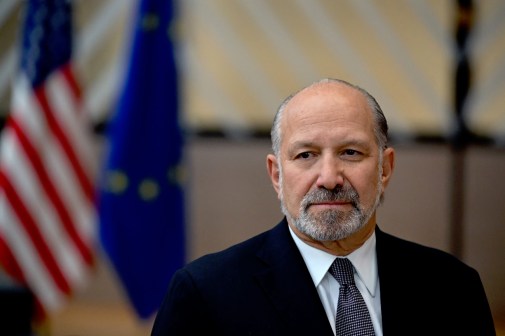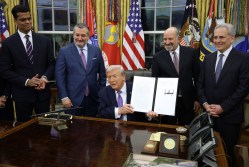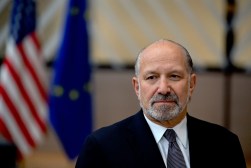Virginia becomes latest state to rush for broadband relief
Virginia Gov. Ralph Northam announced Wednesday the state will allocate $30 million of its pandemic relief funding to “fast track” new broadband projects.
In a press announcement, Northam called high-speed internet “essential” and encouraged localities to apply for funding so residents without access can be connected before the end of the year, one of the requirements of projects funded by the CARES Act. The program, which is set to launch in Virginia on Friday, is the latest attempt by a state government to bridge a digital divide made more apparent this year as record numbers of Americans attempted to work and study from their homes.
“Broadband is to today’s economy like electricity was generations ago — when you have it, you can get ahead,” Northam said in the announcement.
The new broadband allocations are on top of $85 million in broadband infrastructure investment already proposed by Northam as the state inches toward its goal of universal access. About 16% of Virginia’s residents don’t have access to wired broadband, according to BroadbandNow, while the State Council of Higher Education for Virginia estimates 200,000 K-12 students and 60,000 college students lack access to broadband at home.
Other states are also putting some of their CARES Act funding toward broadband, including Delaware, Idaho, Maryland, Mississippi, Oregon, Wisconsin and others. But CARES Act restrictions, such as the requirement that connections be installed by the end of the year, have complicated matters even for states keen to connect their residents as soon as possible, said Christopher Mitchell, who works on broadband initiatives at the Institute for Local Self-Reliance.
“The CARES Act is not well designed to encourage broadband investment,” he said. “You have to spend all the money by the end of the year and you have to have the connections done by then and it’s not supposed to be for connections that were already planned.”
Despite these limitations, some states pressed ahead with new broadband initiatives in the weeks after the Coronavirus Aid, Relief, and Economic Security Act was signed into law in late March.
Mississippi’s public service commission set aside $65 million of its CARES Act funding for broadband, selecting 15 cooperatives promising to connect residents in particularly underserved areas. Mitchell said that project is “one of the best” uses of CARES Act funding for broadband that he’s seen.
Idaho, meanwhile, set aside $50 million in its relief funding that both private and public entities are eligible to apply for if they can meet the year-end deadline. But some states don’t seem to be concerned with that rule at all, Mitchell said.
“I think we’ve seen two broad categories of states,” he said. “One is states that are underspending because they can’t figure out how to spend the money within the rules, and [there are] states that are assuming the rules will be retroactively changed because it will look bad if the federal government tries to claw back money for essential broadband.”
In either case, the restrictions have proven at odds with the new demands placed on states and localities by the pandemic, Mitchell said. And while it’s been more than six months since the CARES Act was signed into law, deliberations over additional relief remain stuck between the Democratic-led House, Republican-led Senate and a White House that appears to be negotiating via presidential tweet.
“When the Congress passes something like this, I think that they expect that they act quickly and when they run into problems like this, they would pass a new law that would adjust it, but Senate Republicans have not been interested in doing anything on this issue,” Mitchell said.






